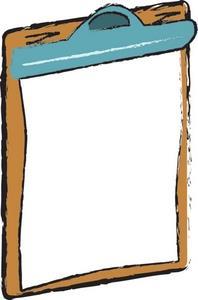The tool for assessing the environmental impact of NHS healthcare facilities is undergoing a facelift. Stephen Kennett finds out what to expect in spring 2008
Since its launch over three years ago NEAT, or the NHS Environmental Assessment Tool, has been the main method available for assessing the impact hospitals and healthcare facilities have on their surroundings. But in that time both best practice and �ǿմ�ý Regulations have moved on significantly. The upshot is that achieving a top rating under NEAT has now become moderately easy and, more importantly, some of the standards it uses no longer meet current regulations.
With this in mind the Department of Health has commissioned BRE to completely revamp NEAT over the coming year, bringing it in line with today’s standards and making it tougher.
So what can we expect of NEAT, version two? The most significant likely change is a switch from self-assessment to an independent form of certification for new and refurbished buildings, says Vicky Mistry, principal consultant with BRE. When the scheme was launched, self-assessment was seen as a quick and relatively cost-effective method. “Now the DoH feels it needs something more rigorous,” she says. “NEAT for new build will be a third-party certification scheme, which the DoH will hand over to BRE to run alongside its other BREEAM schemes.”
Whether it’s labelled NEAT 2 or BREEAM Healthcare has not yet been decided, but it is likely to follow closely the models used for other BREEAM systems to provide a pass, good, very good or excellent rating for any new or refurbished healthcare facility.
Although BRE helped develop NEAT, it still differs significantly from BREEAM, not least in the category headings and the credit system used. It’s proposed that these will be brought in line with BREEAM to simplify the process of briefing assessors. There are also plans to introduce a host of new credits not currently considered by NEAT, but included in BREEAM, ranging from a flood risk credit to one for sustainable sourcing of materials.
Bringing the tool in line with �ǿմ�ý Regulations is also a clear objective along with the way energy is dealt with. While BREEAM favours the methods used by the regulations, which look at a percentage improvement on a notional building, the DoH uses GJ/m3 volume of the building as a measure of its energy consumption. “BREEAM generally aligns with methods used by the �ǿմ�ý Regulations because design teams have to go through the regs process, therefore we are not reinventing the wheel and it’s not an extra job for them,” says Mistry. “What the updated version of NEAT will do is yet to be decided, but it’s important to consider the time it takes to do assessment and the associated costs.”
There is also a big drive to get broader sustainable aspects into the updated tool. “BREEAM is predominantly environmental and if you’re looking at sustainability, you’re looking at economic, social and environmental, and the department is keen to bring more of the other two into NEAT,” says Mistry.
Another focus for change will be how different building types are dealt with. At the moment NEAT works well for acute care and the major hospitals but is less appropriate for primary care facilities. A one-tool-fits-all solution is favoured by the consultation group. Mistry says they need to look at all the issues to see how this can be addressed. “If a one-method approach can be shown to work then that would certainly simplify things. The BREEAM retail scheme, which covers everything from a corner shop to a Brent Cross, works in just that way.”
The other big issue for healthcare facilities is how the assessment will fit in with the multitude of procurement routes and at what stage the assessment will be carried out. Both NEAT and BREEAM are primarily design-stage assessments, although there is a post-construction review option in both. “We’ll be looking at whether a post-construction review should also be mandatory,” says Mistry, “and certainly we can see a day in the future when post-construction review becomes a mandatory part of all BREEAM assessment schemes.”
BRE will also be overhauling NEAT for assessing existing facilities. Self-assessment will continue here, but the tool will be updated in line with the BREEAM schemes with the same ratings.
The initial consultation period for the NEAT overhaul has now ended and development and follow-up consultation will take place through the summer and autumn. The first pilot projects using the new tool will be launched towards the end of the year and the new NEAT scheme is expected to go live by spring 2008.
In a nutshell

- Self-assessment to replace third-party certification for new build and refurbishment
- Similar credit ratings to other BREEAM systems to be adopted
- Approach to energy will be brought in line with �ǿմ�ý Regulations
- More attention to be given to sustainability, particularly social and economic credits
- The opportunity to become a post-construction assessment
Source
�ǿմ�ý Sustainable Design


















No comments yet